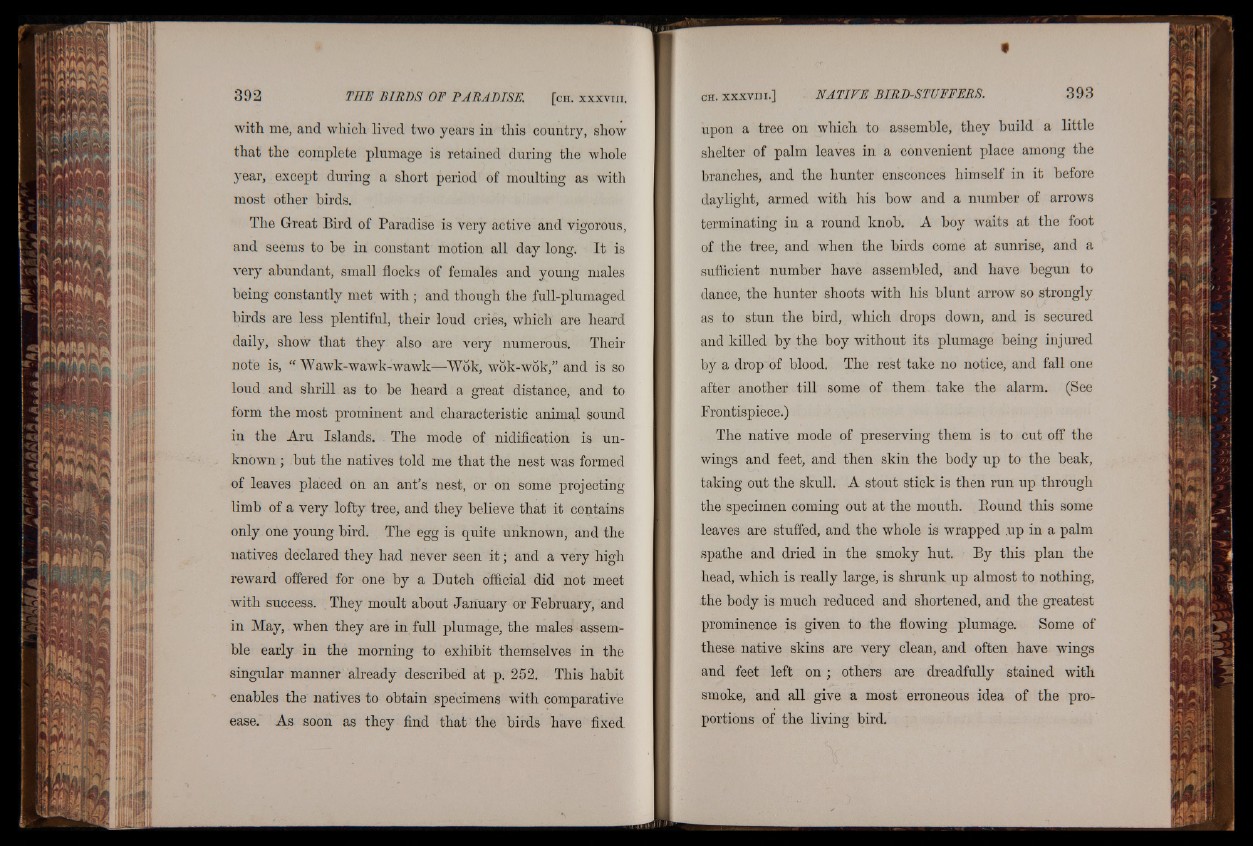
with me, and which lived two years in this country, show
that the complete plumage is retained during the whole
year, except during a short period of moulting as with
most other birds.
The Great Bird of Paradise is very active and vigorous,
and seems to be in constant motion all day long. It is
very abundant, small flocks of females and young males
being constantly met with; and though the ,full-plumaged
birds are less plentiful, their loud cries, which are heard
daily, show that they also are very numerous. Their
note is, " Wawk-wawk-wawk—Wok, wok-wok,” and is so
loud and shrill as to be heard a great distance, and to
form the most prominent and characteristic animal sound
in the Aru Islands. The mode of nidification is unknown
; but the natives told me that the nest was formed
of leaves placed on an ant’s nest, or on some projecting
limb of a very lofty tree, and they believe that it contains
only one young bird. The egg is quite unknown, and the
natives declared they had never seen i t ; and a very high
reward offered for one by a Dutch official did not meet
with success. They moult about January or February, and
in May, when they are in full plumage, the males assemble
early in the morning to exhibit themselves in the
singular manner already described at p. 252. This habit
enables the natives to obtain specimens with comparative
ease. As soon as they find that the birds have fixed
upon a tree on which to assemble, they build a little
shelter of palm leaves in a convenient place among the
branches, and the hunter ensconces himself in it before
daylight, armed with his bow and a number of arrows
terminating in a round knob. A boy waits at the foot
of the tree, and when the birds come at sunrise, and a
sufficient number have assembled, and have begun to
dance, the hunter shoots with his blunt arrow so strongly
as to stun the bird, which drops down, and is secured
and killed by the boy without its plumage being injured
by a drop of blood. The rest take no notice, and fall one
after another till some of them take the alarm. (See
Frontispiece.)
The native mode of preserving them is to cut off the
wings and feet, and then skin the body up to the beak,
taking out the skull. A stout stick is then run up through
the specimen coming out at the mouth. Bound this some
leaves are stuffed, and the whole is wrapped .up in a palm
spathe and dried in the smoky hut. By this plan the
head, which is really laxge, is shrunk up almost to nothing,
the body is much reduced and shortened, and the greatest
prominence is given to the flowing plumage. Some of
these native skins are very clean, and often have wings
and feet left o n ; others are dreadfully stained with
smoke, and all give a most erroneous idea of the proportions
of the living bird.